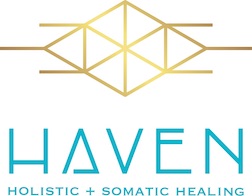Reflecting on meaningful change and the new year.
The photo above shows a microscopic view of fascia – the web of connective tissue in our bodies that surrounds, protects and holds together all of our muscles and organs. This incredible matrix has so many functions and is meant to glide freely between the structures it supports, however if it’s dehydrated, isn’t getting enough movement, or becomes adhered because of an overuse pattern (such as common culprits like sitting at a computer, texting or crossing our legs), it becomes hardened and actually restricts our movement, causing pain.
- The path towards healing in body, mind and spirit are rarely from point A to point B. Just like most journeys in life, you may feel some improvement and then may feel stuck or even a recurrence of symptoms. This is normal, and suggest searching for patience and compassion, trying not be discouraged. The most important thing to look at is the arc of improvement over time, and documenting this for yourself via notes or journaling is an effective way to track your changes. This same principle can be applied to a wide array of situations, from that area in your upper back that has a chronic knot from stress or an area where you had a surgery 5 years ago that’s just never been the same.
- Your symptoms did not arrive overnight. For example, your fascia may have gradually been getting more hardened (let’s say for example, by using a mouse for many hours a day) until it created a symptom you could no longer ignore. While one treatment may take the edge off, it may take multiple treatments and lots of self-care as well as changes in behavior to bring the fascia back to the state it’s meant to be in. This is true for many other body systems despite what modern medicine and “take a pill” mentality may want us to recognize, or that we feel we have time to deal with. This may be a time to consider the alternative outcome of not making ourselves (our health, our bodies) a priority.
- Pain is the language your body uses to get your attention and tell you something isn’t working, emotionally or physically – it’s not a sign of failure, your body is not your enemy, but it may need space and patience to understand. Powering through the pain attitudes or self-depreciation will not help you meet your goals or enhance your well-being, and can be pitfall when experiencing discomfort and even causing a more serious issue. Consider including your body in any mindfulness strategies you may be applying to your thinking and asking it what it needs today.
It’s no accident that the concept of creating space is the title of this newsletter, the tagline for Haven and a large part of our mission. It’s one of the most challenging and easiest to dismiss parts of our lifestyle, and often we tell ourselves it’s impossible or undeserved. The reality is that true self care is often uncomfortable and requires looking at things that aren’t easy to admit, pushing through fears. We need space to truly be mindful, to hear the voice inside directing us towards our own well being. Space for processing our emotions, space for connective tissue to unwind and muscles to move and energy to flow freely. We need safe spaces in our homes, spaces where we can tap in to this internal wisdom. We hope that Haven can be one of these spaces for many of you. We wish you a year that, even if only in baby steps, you are able to create more of the space you need to grow and flourish.
